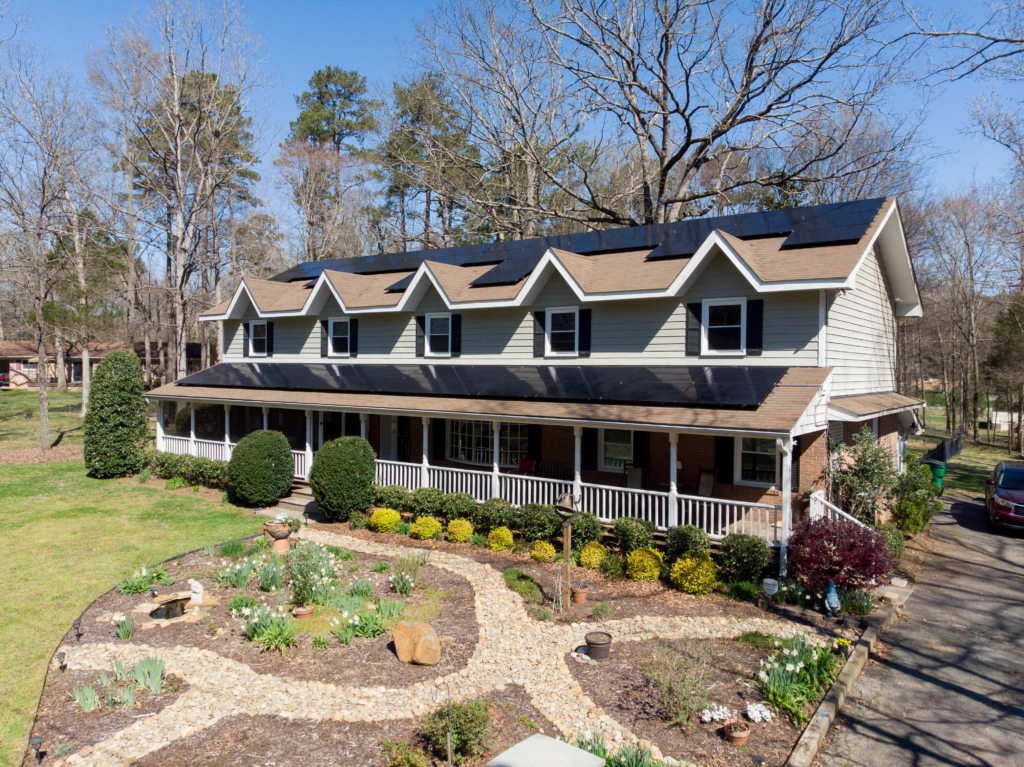Tesla EV Charging
Tesla EV Charging
Tesla EV Charging has become very popular with the surge in purchases of electric vehicles. Electric cars – with no gas engine at all – now work for most budgets and lifestyles. With more than 20 models to choose from, more drivers are choosing electric vehicles (or EVs) than ever before!
In general, EVs offer several benefits for the user and the community particularly when paired with solar:
- Driving electric is affordable: On average, powering a car electrically equates to $1/per gallon gasoline, according to the Department of Energy.
- It makes air healthier: EVs have no tailpipe, so driving one helps you and the community where you live breathe easier.Shifting to more EVs from gas cars over time can impact rates of asthma and other respiratory problems.
- It’s convenient and saves on auto maintenance: Not a fan of getting transmission work done, remembering oil changes, keeping spare spark plugs, etc? EVs eliminate all those and other common services and are usually emissions-testing-exempt where applicable.
- It’s more sustainable: As the grid gets cleaner, by 2050 driving an EV charged from the grid will only contribute about 29% of the carbon pollution of a gas car, and already is 54% cleaner than driving an internal combustion engine, partly because of efficiency. Charging with solar brings your travel emissions to zero.
- It’s an example of clean energy patriotism: Drivers who go electric help reduce our dependence on foreign oil, which we spend half a billion dollars on every day.
- Electric car performance is unbeatable: If you’d like a quiet, smooth ride with more get-up-and-go, that’s a reason to try electric. That moment when you go to merge onto a 60-mile-an-hour highway with no acceleration line is a piece of cake in an EV.
There is a number of reasons you might choose a Tesla Model 3 sedan, and as of July 2018 it is now available to order from a dealership without a reservation, with delivery in as little as about 4 months.
Our Tesla EV charging installation customers tell us they like several of the vehicle’s advanced features:
- Practicality: fully electric with a range of 310 miles – superchargers are now deployed at over 10,000 locations along well-traveled routes providing a 170-mile charge in 30 minutes
- Safety: 360 degree cameras and 250-meter front facing radar, as well as excellent ratings in crush tests
- Performance: superior handling and speed, with All-Wheel drive and 2 independent motors to enhance torque
- More details at www.tesla.com/model3
You have home charging options for your vehicle. Tesla recommend(s) the Wall Connector as the most convenient home charging equipment for Tesla vehicles.
Available with either a 8.5′ cable or 24′ cable, this hardware can be purchased from a local Tesla service center or ordered online. Permanently mounted to a wall or post, the Wall Connector can be installed both indoors and outdoors.
A defining feature is the ability to be installed with any circuit breaker ranging from 15 to 100 amps, which allows the Wall Connector to be custom fit to almost any electrical system.
We recommend installing the Wall Connector with a power output to match the on-board charger of the vehicle, typically a 40, 60 or 90 amp circuit breaker. To see the advantages over a standard outlet, review the technical details and estimated recharge speeds:
Renu Energy Solutions can complete your Wall Connector installation for a Total project price of about $799 – $1199 (depending on the scope of electrical work.)
We’re happy to discuss your Tesla EV charging preferences and help determine if the conventional, less-speedy NEMA 14-50 outlet will work for you and whether you need any adapters or accessories, or if the rapid, convenient Tesla Wall Connector outlet is a better fit for you.


Frequently Asked Questions About Solar for Your Home or Business:
How exactly does going solar and a solar system itself work?
How many solar panels do I need for my home?
Roof-size/available space: When we look at the size of your roof and the space available, we gather data that tell us the maximum number of solar panels your home or site can hold and we even consider shading. We use a software “Suneye” which takes a 360 picture of your roof and we use this photo to determine if your home is a good candidate for solar.
Energy Usage: When we determine energy usage we look at your past electrical bills from over the course of a year to make sure your system isn’t too big or too small.
Your Budget: We take your budget seriously and most importantly, we want you to be satisfied with our services. We take your feedback on how much you want to spend so that we can size your system appropriately.
What is solar net-metering?
Does Duke Energy offer net-metering?
Curious about the cost of a home solar system?
Ready to Own Your Own Energy?
Speak to Us Today!
